Yongle Palace: Where History Meets Serenity in the Heart of China

An Essential Guide to Visiting Yongle Palace
In This Guide
- An Essential Guide to Visiting Yongle Palace
- The Rich History and Legends of Yongle Palace
- Main Highlights: What You Absolutely Can’t Miss
- Planning Your Visit: A Practical Guide
- Tickets: Prices, Booking, and Tips
- How to Get There: A Complete Transportation Guide
- Local Cuisine and Accommodation Nearby
- Frequently Asked Questions
- Final Thoughts on Your Trip
Visiting Yongle Palace is like stepping into a living tapestry of Chinese history and spirituality. Nestled in the scenic Ruicheng County of Shanxi Province, this majestic Taoist temple complex stands as the largest surviving example from the Yuan Dynasty, offering a unique glimpse into the architectural and artistic achievements of the period. Built between 1247 and 1262, the palace is not only a sanctuary of worship but also a treasure trove of cultural heritage, housing some of the most exquisite murals and carvings that date back to the 14th century.
As you wander through the tranquil grounds, the intricate designs and vibrant colors of the murals will draw you into the rich narratives of Taoism, depicting deities and celestial beings in breathtaking detail. The palace’s architecture, characterized by its simple yet elegant lines, reflects the understated beauty of Yuan Dynasty craftsmanship, which stands in stark contrast to the opulence of later Ming and Qing structures.
Whether you are an enthusiast of history, an admirer of art, or simply seeking a serene escape from the hustle and bustle of modern life, Yongle Palace promises an enriching experience. Here, you can reflect on the spiritual significance of the site while soaking in the stunning natural surroundings that have inspired countless visitors throughout the centuries.
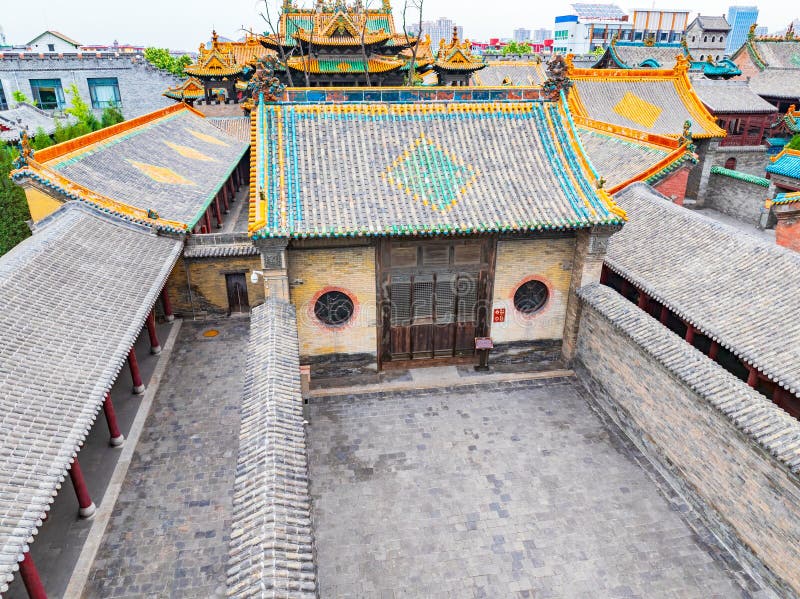
Yongle Palace.
Prepare to embark on a journey that intertwines spirituality, artistry, and history—an exploration that will leave you with a profound appreciation for China’s deep cultural roots.
The Rich History and Legends of Yongle Palace
Yongle Palace, a remarkable testament to the artistic and architectural prowess of the Yuan Dynasty, stands as one of China’s most significant Taoist temples. Nestled in the picturesque landscape of Ruicheng County, this stunning complex encapsulates centuries of spiritual devotion, artistic expression, and historical significance.
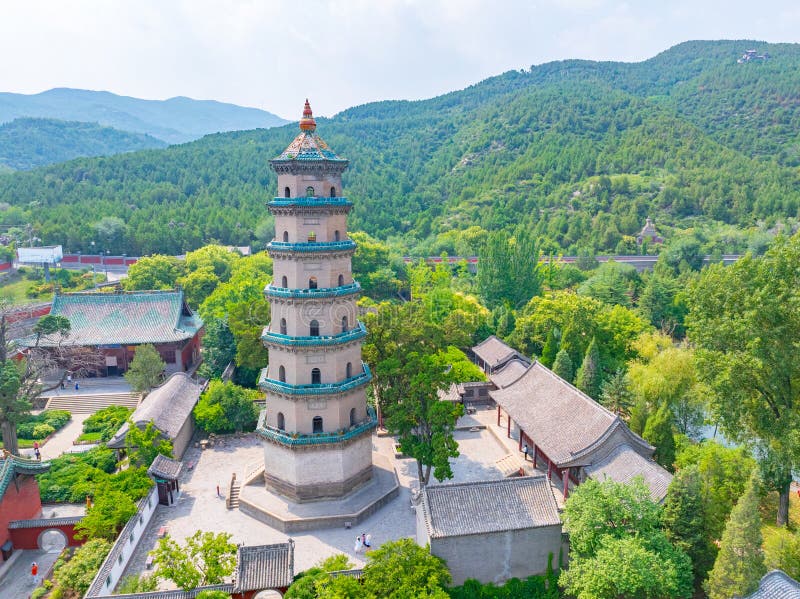
Yongle Palace.
Historical Origins
Constructed between 1247 and 1262, Yongle Palace is not only the largest remaining Taoist temple from the Yuan Dynasty, but it also showcases the distinctive architectural style of the era. The palace, originally known as Dachunyang Longevity Palace, took over a century to complete, reflecting the dedication and craftsmanship of the artisans of the time. It features a unique structural design characterized by thick brackets and a more austere aesthetic compared to the ornate styles that followed in the Ming and Qing dynasties.
The temple complex is organized along a south-north axis, allowing visitors to traverse its halls in a manner that reflects the Taoist philosophy of harmony with nature and the universe. Most notably, the walls of Yongle Palace are adorned with exquisite murals that date back to 1358, depicting a variety of Taoist deities and mythical scenes. These murals are not only of high artistic value but also serve as a visual narrative of Taoist beliefs and traditions, making them a rare treasure outside of museum collections.
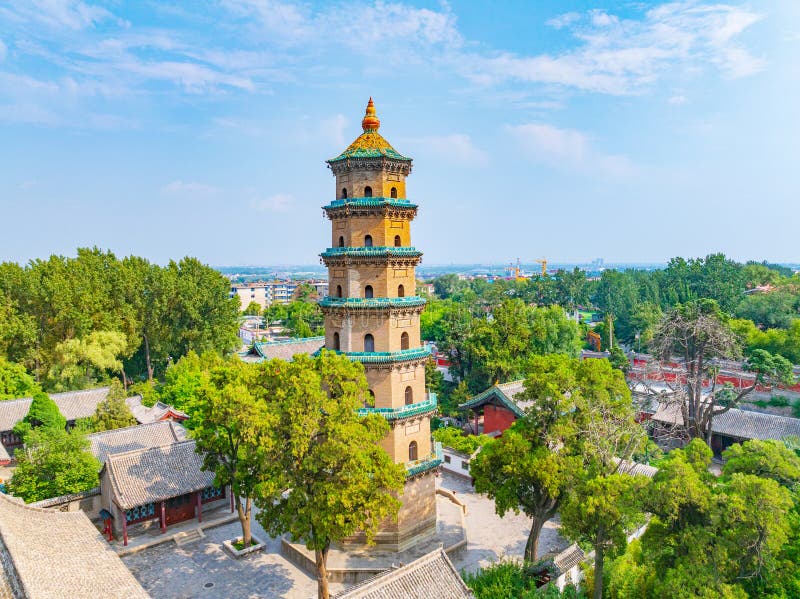
Yongle Palace.
Cultural Significance
Yongle Palace is more than just a historical site; it is a sanctuary of Taoist spirituality. The temple has long been a pilgrimage destination for devotees seeking blessings and enlightenment. It represents the enduring legacy of Taoism in Chinese culture, where the worship of deities and the practice of rituals have been integral to the spiritual lives of many.
The architecture of Yongle Palace reflects the philosophical underpinnings of Taoism, emphasizing simplicity and a connection to nature. Visitors often find themselves enveloped in a serene atmosphere, conducive to reflection and meditation. The harmony of the temple’s design with its natural surroundings enhances the spiritual experience, inviting travelers to explore both the physical and metaphysical realms.
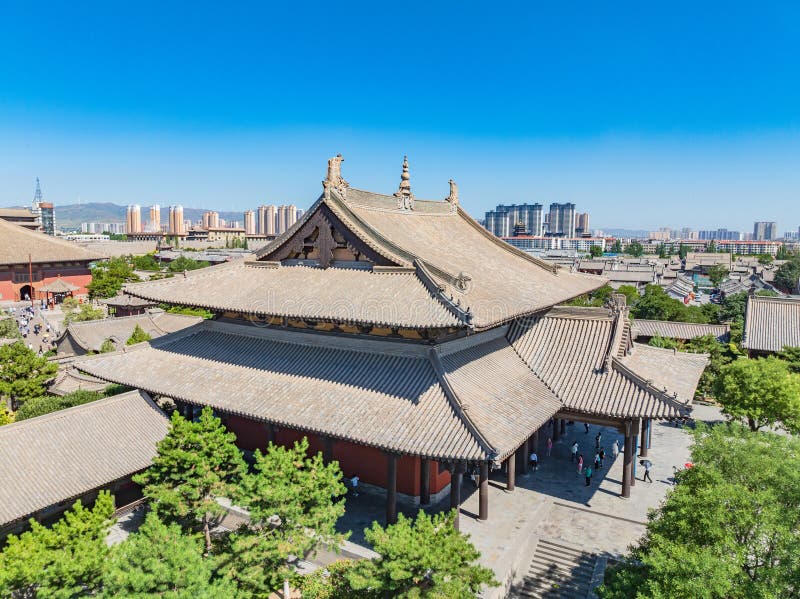
Yongle Palace.
Legends of Yongle Palace
Throughout its storied history, Yongle Palace has been the backdrop for numerous legends and tales that enrich its cultural tapestry. One such legend speaks of the temple being built as a tribute to the deity of longevity, who is believed to bless practitioners with extended lives and good fortune. This sense of protection and blessing is deeply ingrained in the rituals performed within its walls.
Another captivating tale involves the murals themselves. It is said that the vibrant colors and intricate details were imbued with the essence of the artists’ spirits, making them a living expression of Taoist philosophy. Some visitors claim that gazing upon these murals can evoke profound spiritual insights, drawing one closer to the divine.
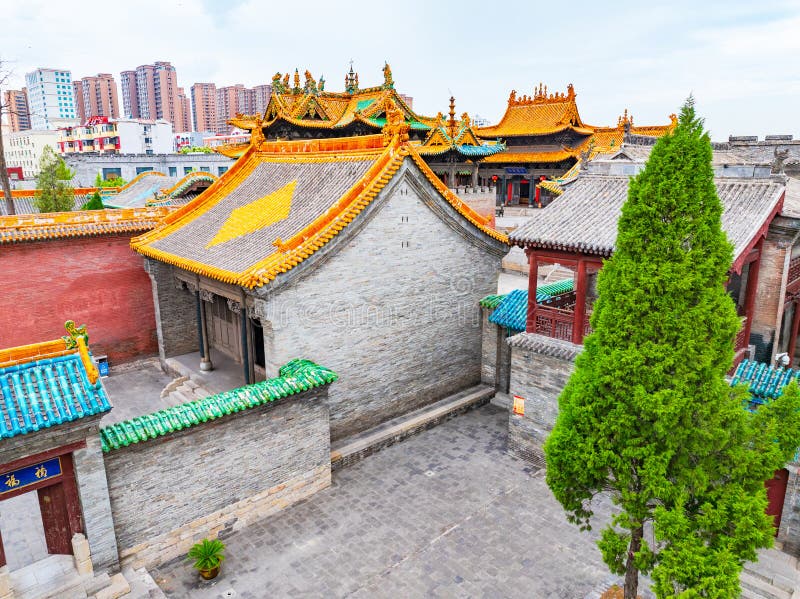
Yongle Palace.
Visiting Yongle Palace Today
Today, Yongle Palace stands as a celebrated cultural landmark, attracting both domestic and international travelers. With its rich history and profound spiritual significance, it offers a unique glimpse into the world of Taoism and traditional Chinese architecture. As you wander through its halls and admire the stunning murals, you are not merely observing history; you are partaking in a living tradition that has evolved over centuries.
With a suggested visit time of 1 to 2 hours, it’s easy to immerse yourself in the tranquility and beauty of Yongle Palace. Whether you are an avid historian, a spiritual seeker, or simply a curious traveler, this remarkable site promises an enriching experience that resonates long after you leave its sacred grounds.
Main Highlights: What You Absolutely Can’t Miss
Discover the Unmissable Highlights of Yongle Palace
Nestled in the serene landscape of Ruicheng County, Yongle Palace (永乐宫) stands as a testament to the grandeur of Yuan Dynasty architecture and Taoist spirituality. As the largest surviving Taoist temple from this period, this remarkable site is a cultural treasure that beckons international travelers to delve into its historical depths. Here are the main highlights you simply can’t miss during your visit:
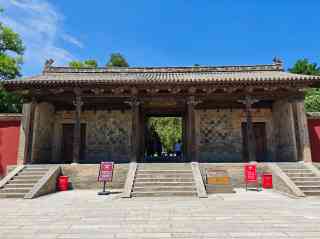
Yongle Palace.
1. The Architectural Marvel
Yongle Palace showcases the distinctive architectural style of the Yuan Dynasty, characterized by its simplistic yet elegant design. Unlike the more ornate structures of the Ming and Qing Dynasties, the palace features thick, interlocking wooden brackets that create a sturdy yet airy feel. Its halls are thoughtfully arranged along a south-north axis, allowing for an authentic experience of traditional Chinese architectural principles.
2. Breathtaking Murals
One of the most captivating aspects of Yongle Palace is undoubtedly its stunning murals. Completed in 1358, these intricate artworks depict various Taoist themes and deities, each panel bursting with color and life. The murals are not just decorative; they serve as a window into the spiritual and artistic expressions of the era, making them a highlight for art enthusiasts and history buffs alike.
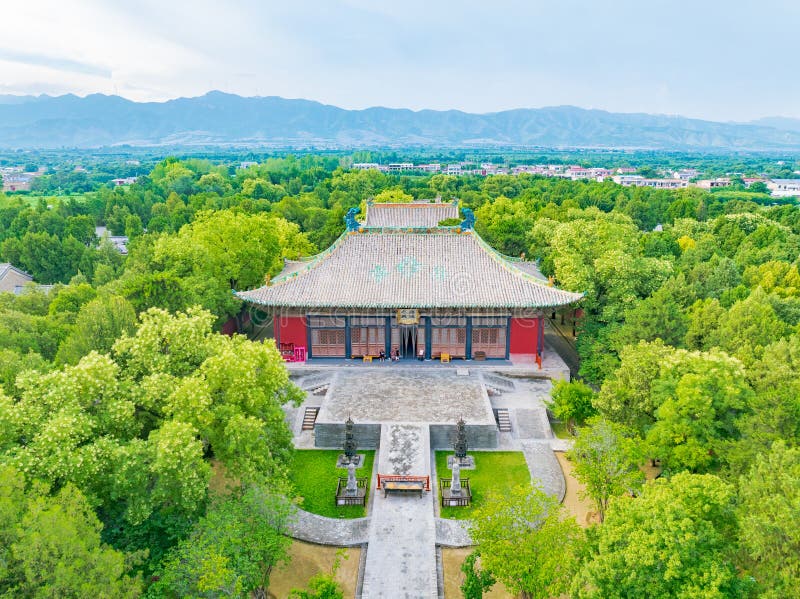
Yongle Palace.
3. Tranquil Environment
Set against the backdrop of picturesque mountains, the palace offers a serene escape from the hustle and bustle of modern life. The peaceful atmosphere invites visitors to reflect and explore, making it an ideal location for contemplation and spiritual connection. Take a moment to stroll through the beautifully maintained grounds and soak in the tranquility that surrounds this ancient site.
4. Cultural Insights
Visiting Yongle Palace provides a unique opportunity to gain insights into Taoist beliefs and practices. The complex is not only a place of worship but also a center of learning and cultural expression. Engage with local guides or interpretive materials to deepen your understanding of Taoism and its significance in Chinese culture.
5. Nearby Attractions
Expand your exploration of the region by visiting nearby historical sites such as:
– Guangren Wang Temple: A Tang dynasty relic showcasing exquisite wooden structures.
– Shengshou Temple Relic Towers: Ancient ruins with deep historical significance.
– The Former Residence of Lvdongbin: A site dedicated to one of Taoism’s most revered figures.
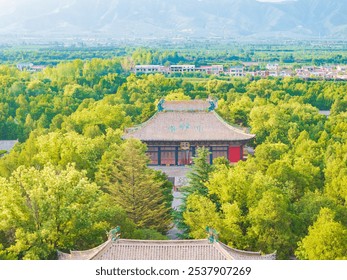
Yongle Palace.
6. Visitor Information
- Location: Approximately 2 kilometers north of Ruicheng County, Yuncheng City.
- Recommended Visit Duration: 1-2 hours to fully appreciate the architecture and artwork.
- Entry Fee: Around HKD 7.56, making it an affordable cultural excursion.
Conclusion
Yongle Palace is more than just a historical site; it’s a journey into the heart of Chinese culture and spirituality. Whether you’re an architecture enthusiast, an art lover, or simply seeking a peaceful retreat, this magnificent palace offers a rich tapestry of experiences that will leave a lasting impression. Prepare to be captivated by the beauty and history that Yongle Palace has to offer!
Planning Your Visit: A Practical Guide
Your Gateway to the Wonders of Yongle Palace
Visiting Yongle Palace (永乐宫) is a journey into the heart of China’s rich spiritual and architectural heritage. Nestled in Ruicheng County, this remarkable Taoist temple complex offers a unique glimpse into the Yuan Dynasty’s artistry and devotion. Here’s everything you need to know to make your visit unforgettable.
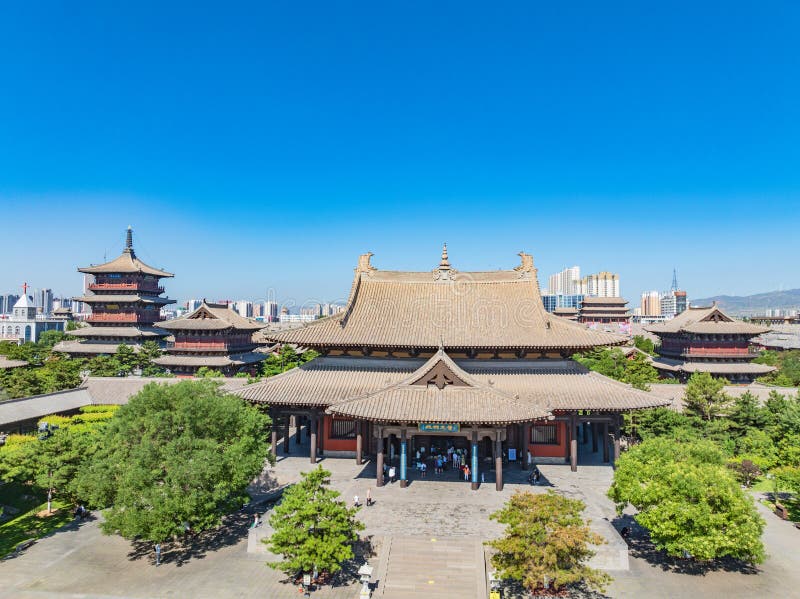
Yongle Palace.
Location and Getting There
Yongle Palace is situated approximately 2 kilometers north of Ruicheng County, Yuncheng City, in Shanxi Province. The exact address is No. 78 Yongle North Street, Ruicheng County, 044600 China.
Transportation Options:
- By Public Transport: Local buses frequently connect Yuncheng City with Ruicheng County. Look for buses headed towards Ruicheng, and inquire about stops near Yongle Palace.
- By Taxi: Taxis are readily available in Yuncheng. A taxi ride to Yongle Palace will take around 20 minutes from the city center.
- By Car: If you are driving, the palace is easily accessible via local roads, with ample parking available on-site.
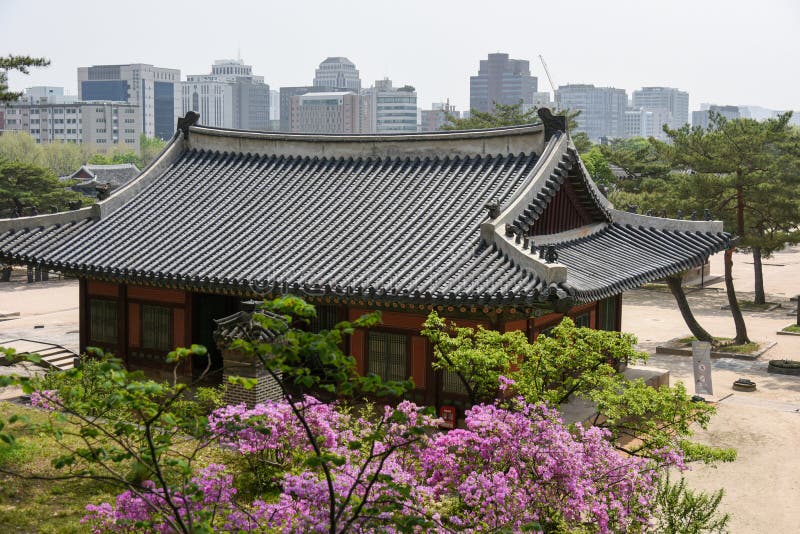
Yongle Palace.
Opening Hours and Admission
- Opening Hours: Yongle Palace is open daily from 8:00 AM to 5:30 PM.
- Admission Fee: The entrance fee is approximately HKD 7.56 (about USD 1), making it an affordable attraction for history enthusiasts.
Suggested Duration of Visit
Plan to spend 1 to 2 hours at Yongle Palace. This timeframe allows you to explore the stunning architecture, appreciate the intricate murals, and soak in the serene atmosphere of this historical site.
What to Expect
Yongle Palace is celebrated as the largest surviving Taoist temple from the Yuan Dynasty, originally constructed between 1247 and 1262. Key features include:
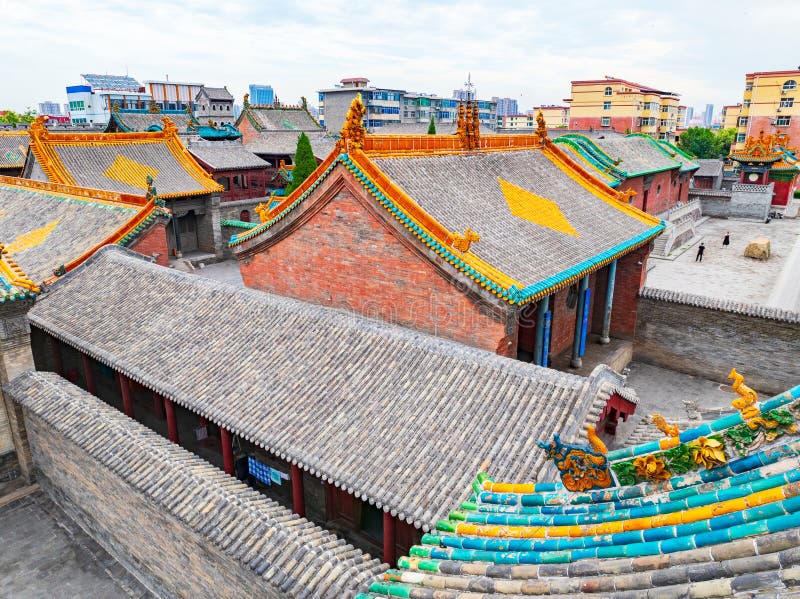
Yongle Palace.
- Architectural Style: The palace showcases a distinctive Yuan-era architectural style characterized by thick brackets and minimal decorative carvings, creating a bright and spacious ambiance.
- Murals: Marvel at the exceptional wall paintings, many dating back to 1358, depicting various Taoist themes and deities. These murals are considered some of the finest examples of Chinese art outside of museums.
Nearby Attractions
Enhance your cultural experience by visiting these nearby sites:
- Guangren Wang Temple: A historic temple showcasing ancient wooden structures (0.5 mi).
- Shengshou Temple Relic Towers: Explore ancient ruins and religious sites (1 mi).
- Chenghuang Temple: Another prominent religious site worth visiting (2.6 mi).
- Dayu Ferry: A scenic historic site located along the Yellow River (3.7 mi).
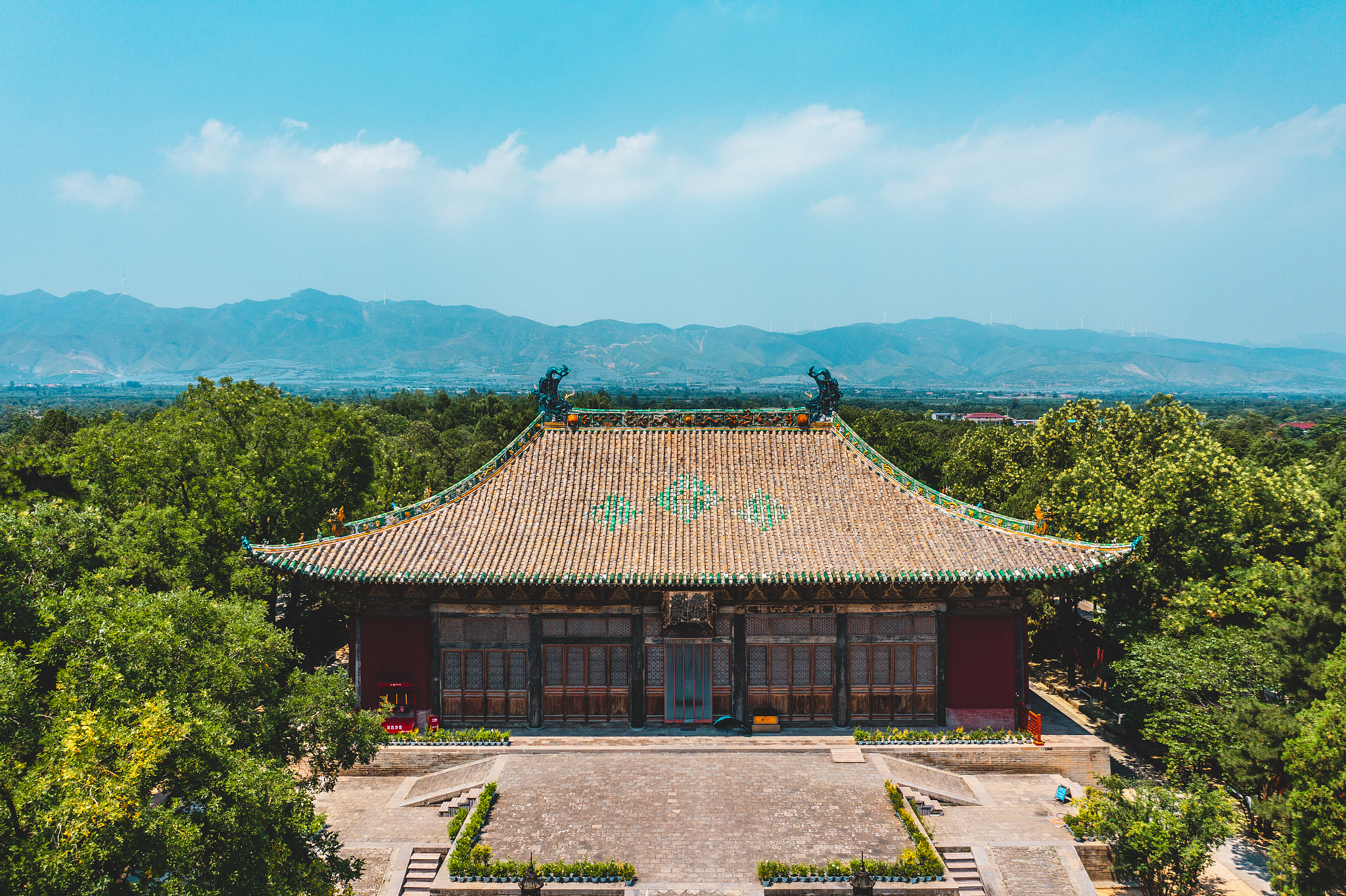
Yongle Palace.
Tips for a Great Visit
- Dress Appropriately: As a place of worship, visitors should dress modestly. Comfortable footwear is recommended for walking through the complex.
- Photography: Feel free to take photos, but be respectful of any areas marked as off-limits. The murals are particularly captivating, so have your camera ready.
- Guided Tours: Consider joining a guided tour for deeper insights into the history and significance of the palace and its artwork.
Final Thoughts
Visiting Yongle Palace is more than just a sightseeing trip; it’s an opportunity to connect with the spiritual and artistic legacy of China. Whether you are an avid historian or simply seeking a tranquil retreat, this ancient palace is sure to leave a lasting impression on your journey through China’s rich tapestry of culture and history.
Tickets: Prices, Booking, and Tips
Visiting Yongle Palace (永乐宫) is a journey into the heart of Chinese history and Taoist architecture, and planning your visit with the right ticketing information can enhance your experience. Here’s everything you need to know about ticket prices, booking options, and some helpful tips for your visit.
Ticket Prices
- General Admission:
- Approximately HKD 7.56 (around 1.00 USD), making it an incredibly affordable cultural experience.
Booking Information
- On-Site Purchase:
-
Tickets can be purchased on-site at the entrance of Yongle Palace. It is advisable to arrive early, especially during peak tourist seasons, to avoid long lines and ensure entry.
-
Online Booking:
- Some travel platforms may offer the option to book tickets in advance. However, check official tourism websites or reputable travel services for availability and any potential discounts.
Opening Hours
- Daily Access:
- Yongle Palace is typically open every day, including weekends and holidays. Confirm current hours before your visit, as they can vary by season or for special events.
Tips for Your Visit
- Plan Your Visit:
-
Allocate 1-2 hours to fully explore the palace and appreciate the stunning murals and architecture.
-
Guided Tours:
-
Consider joining a guided tour to gain deeper insights into the palace’s history and the significance of its Taoist features. Knowledgeable guides can enrich your experience with anecdotes that bring the murals and structures to life.
-
Photography:
-
The vibrant murals and intricate architecture are perfect for photography enthusiasts. Be sure to check if photography is permitted in certain areas to respect the site’s regulations.
-
Combine Attractions:
-
If time allows, explore nearby attractions such as the Guangren Wang Temple and Shousheng Temple, which are within a short distance from Yongle Palace. This will give you a more comprehensive view of the region’s rich historical tapestry.
-
Local Cuisine:
- After your visit, treat yourself to local Shanxi cuisine at nearby restaurants. The region is known for its unique flavors and dishes, offering a delightful culinary experience to complement your cultural exploration.
Conclusion
Yongle Palace is not just a destination; it’s a gateway to the spiritual and artistic heritage of China. With reasonable ticket prices and the opportunity to immerse yourself in the tranquility of this magnificent Taoist site, your visit promises to be a memorable highlight of your travels in Shanxi Province. Plan ahead, and you’ll find yourself captivated by the beauty and history that Yongle Palace has to offer.
How to Get There: A Complete Transportation Guide
Getting to Yongle Palace: Your Guide to Transportation
Visiting Yongle Palace (永乐宫) is a journey into the heart of China’s rich history and culture. Nestled in Ruicheng County, Shanxi Province, this significant Taoist temple from the Yuan Dynasty is not only a marvel of architecture but also a treasure trove of ancient murals and artistry. Planning your trip requires some knowledge of transportation options to ensure a seamless and enjoyable experience. Here’s how you can reach this historic site.
Arriving by Air
Nearest Airports:
– Yun Cheng Airport (YCU): The closest airport, located approximately 15 kilometers (about 9 miles) from Yongle Palace. This airport offers domestic flights from major cities, such as Beijing and Shanghai.
– Taiyuan Wusu International Airport (TYN): About 150 kilometers (approximately 93 miles) away, this airport serves more international routes and could be a good option if you are traveling from overseas.
Transportation from the Airport:
– Taxi: Taxis are readily available at both airports. A ride from Yun Cheng Airport to Yongle Palace should take around 30 minutes, while the journey from Taiyuan can take up to 2 hours.
– Car Rentals: If you prefer to drive, car rental services are available at both airports. This option provides flexibility to explore the surrounding Shanxi region.
Traveling by Train
Shanxi Province is well-connected by rail, making it convenient for travelers to reach Ruicheng County.
Key Train Stations:
– Yuncheng Railway Station: This is the nearest major train station, located approximately 20 kilometers (about 12 miles) from Yongle Palace. You can reach Yuncheng from major cities like Beijing, Xi’an, and Taiyuan.
Getting to Yongle Palace from Yuncheng:
– Taxi or Rideshare: Upon arriving at Yuncheng Railway Station, taxis and rideshare options are available. The ride to Yongle Palace will take around 30-40 minutes.
– Local Buses: You may find local buses heading towards Ruicheng, which is a more economical option, although less direct.
By Bus
For budget-conscious travelers, buses are an efficient way to reach Ruicheng County.
Bus Services:
– From Yuncheng: Buses frequently run from Yuncheng to Ruicheng County. The journey takes about 1 hour and operates several times a day. Look for the Yuncheng Bus Station for schedules and routes.
– Direct Buses from Taiyuan: If you are traveling from Taiyuan, direct buses to Ruicheng are available and typically take 3-4 hours.
Local Transportation
Once you arrive in Ruicheng County, getting to Yongle Palace is straightforward.
Getting to Yongle Palace:
– Taxi: Taxis are available throughout the county, and you can easily hail one to take you to Yongle Palace, which is about 2 kilometers (1.2 miles) north of the county center.
– Walking: If you are staying nearby, the palace is within a reasonable walking distance, allowing you to enjoy the local scenery.
Tips for a Smooth Journey
- Language: While major transportation hubs may have English signage, it’s helpful to have the name “Yongle Palace” written in Chinese (永乐宫) to show to taxi drivers.
- Cash: Keep some cash on hand, as not all taxis and buses accept credit cards or mobile payments.
- Timing: Plan your visit to Yongle Palace during daylight hours to fully appreciate the stunning architecture and murals.
By following this transportation guide, you can smoothly embark on your journey to Yongle Palace, immersing yourself in its historical significance and breathtaking beauty. Enjoy your exploration of one of China’s most captivating cultural sites!
Local Cuisine and Accommodation Nearby
When visiting the awe-inspiring Yongle Palace, it’s essential to immerse yourself not only in its rich history and stunning architecture but also in the local culinary delights and nearby accommodations that enhance your travel experience.
Savoring Local Cuisine
Shanxi Province is renowned for its unique flavors and traditional dishes, making it an excellent stop for food enthusiasts. Here are a few local specialties to try during your visit:
-
Shanxi Noodles (刀削面, Dāoxiāomiàn): These hand-sliced noodles are a must-try. Served in a rich broth with vegetables and minced meat, they are a hearty and satisfying dish that reflects the region’s culinary heritage.
-
Vinegar (山西老陈醋, Shānxī Lǎo Chéncù): Shanxi is famous for its aged vinegar, which has a distinct flavor. Use it as a dip or condiment to enhance the taste of your meals.
-
Stewed Lamb (羊肉泡馍, Yángròu Pàomó): A comforting dish featuring tender lamb stewed with bread pieces, perfect for warming you up after a day of exploration.
-
Taoist Cuisine: Experience the spiritual aspect of dining with vegetarian dishes inspired by Taoist principles. Many local restaurants offer meals that align with these traditions, focusing on fresh vegetables, tofu, and grains.
Where to Stay
For a comfortable and convenient stay near Yongle Palace, consider the following accommodation options that cater to various budgets:
- Yuncheng International Hotel (运城国际酒店)
- Type: Luxury
-
Description: This upscale hotel offers modern amenities, spacious rooms, and excellent service, making it an ideal base for exploring the region. It’s located about a 20-minute drive from Yongle Palace, ensuring easy access to the site.
-
Ruicheng Hotel (芮城宾馆)
- Type: Mid-range
-
Description: Located in Ruicheng County, this hotel provides comfortable rooms and a restaurant serving local cuisine. Its proximity to Yongle Palace makes it a convenient choice for travelers.
-
Home Inn (如家酒店)
- Type: Budget
-
Description: A popular budget option, Home Inn offers clean and simple accommodations. It’s suitable for travelers looking for a no-frills stay while still being close to local attractions, including the palace.
-
Local Guesthouses
- Type: Various
- Description: For a more authentic experience, consider staying in one of the local guesthouses. Many offer traditional Chinese hospitality and home-cooked meals, giving you a taste of local life.
Conclusion
Combining the historical allure of Yongle Palace with the rich flavors of Shanxi cuisine and comfortable accommodations ensures a well-rounded travel experience. Whether you are indulging in local dishes or resting after a day of exploration, the area surrounding Yongle Palace is sure to leave you with lasting memories of your adventure in this culturally vibrant region.
Frequently Asked Questions
Frequently Asked Questions about Yongle Palace
1. What is Yongle Palace and why is it significant?
Yongle Palace, also known as Dachunyang Longevity Palace, is the largest Taoist temple remaining from the Yuan Dynasty, built between 1247 and 1262. It stands as a remarkable example of Yuan Dynasty architecture and is renowned for its exquisite murals, which are among the finest examples of Chinese art outside of museums.
2. Where is Yongle Palace located?
Yongle Palace is situated approximately 2 kilometers north of Ruicheng County in Yuncheng City, Shanxi Province, China. The address is No. 78 Yongle North Street, Ruicheng County, 044600.
3. What are the opening hours of Yongle Palace?
Typically, Yongle Palace is open daily, though hours may vary by season or for special events. It’s advisable to check the official website or contact the palace directly before your visit for the most accurate information.
4. How much does it cost to enter Yongle Palace?
The entrance fee for Yongle Palace is approximately HKD 7.56 (around 10 RMB). This modest fee grants you access to the stunning architecture and vibrant murals that define this cultural treasure.
5. How long should I plan to spend at Yongle Palace?
A visit to Yongle Palace typically takes about 1 to 2 hours. This allows ample time to explore the temple complex, appreciate the intricate murals, and soak in the serene atmosphere.
6. Are there guided tours available?
Yes, guided tours are often available for visitors who wish to gain deeper insights into the history and significance of Yongle Palace. These tours can enrich your experience and provide context to the stunning art and architecture.
7. What should I wear when visiting Yongle Palace?
Visitors are encouraged to wear comfortable clothes and shoes suitable for walking, as you will be exploring an expansive temple complex. Additionally, since it is a religious site, modest attire is recommended to show respect for the cultural significance of the location.
8. Are there other attractions near Yongle Palace?
Yes, there are several notable attractions nearby, including Guangren Wang Temple, Shengshou Temple Relic Towers, and the Former Residence of Lvdongbin. These sites offer additional opportunities to explore the rich history and culture of the region, making it a perfect day trip for cultural enthusiasts.
Final Thoughts on Your Trip
As your journey through Yongle Palace comes to a close, take a moment to reflect on the rich tapestry of history, art, and spirituality that you have encountered. This extraordinary site, the largest remaining Taoist temple from the Yuan Dynasty, is not just a testament to architectural prowess but also a vibrant canvas of Taoist culture that has inspired countless visitors over the centuries.
Key Highlights to Remember:
-
Architectural Marvel: The unique construction style of the palace—characterized by its spare yet striking design—offers a glimpse into the Yuan Dynasty’s architectural ethos. Each hall and structure tells a story of time, tradition, and craftsmanship.
-
Murals of Mastery: The intricate murals, some dating back to 1358, are truly treasures of Chinese art. Their vivid colors and detailed depictions of Taoist themes provide insight into the spiritual world of ancient China.
-
Serene Surroundings: Nestled amidst stunning landscapes, Yongle Palace provides a peaceful retreat where one can contemplate and connect with the essence of Taoist philosophy. The tranquil environment invites reflection, making it a perfect spot for both exploration and meditation.
-
Cultural Significance: More than just a museum of art and architecture, Yongle Palace is a living piece of history. It stands as a reminder of the enduring legacy of Taoism and the cultural richness of Shanxi Province.
As you prepare to leave, consider extending your exploration to nearby attractions, such as the Guangren Wang Temple and the historic Guanque Tower, each enriching your understanding of this captivating region.
In every corner of Yongle Palace, you’ve found not only echoes of the past but also a vibrant spirit that continues to inspire. Take these memories with you, and let them deepen your appreciation for the profound history and culture of China. Whether it’s the intricate craftsmanship of the palace or the serene beauty of its surroundings, Yongle Palace undoubtedly leaves a lasting impression on the hearts and minds of those who visit. Safe travels on your next adventure!